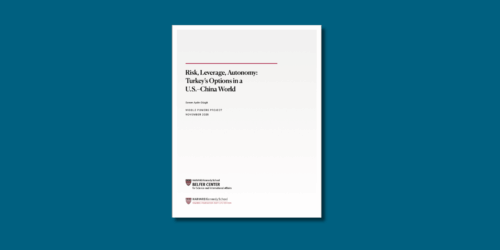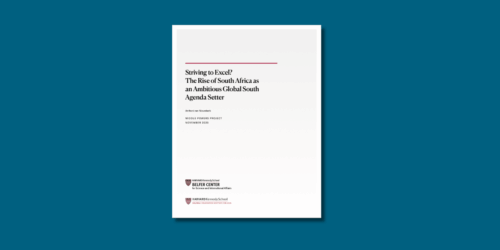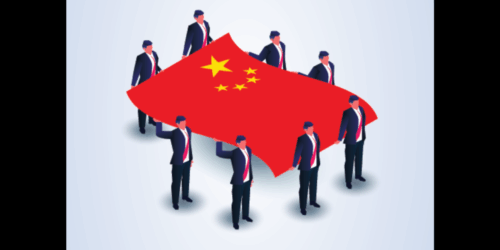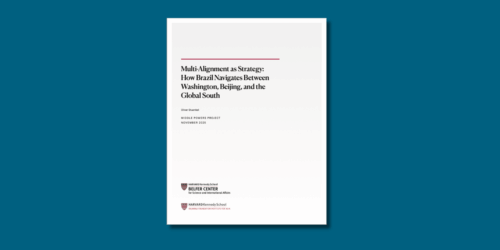The outcome of the 2024 US presidential election has reignited discussions about America’s future approach to China under a second Trump administration. With tensions between the two global powers already heightened and the international economic landscape in flux, many are asking: What will another four years of “America First” mean for US-China relations? The Rajawali Foundation Institute for Asia sat down with Tony Saich, Daewoo Professor of International Affairs, to explore what a second Trump term might mean for trade, technology, Taiwan, and beyond.
Rajawai: How might Trump’s approach to China change in a second term compared to his first four years in office?
During his first term, it took Trump a couple of years to harden his policy toward China when he began the tariff battle. In the first term, he used this to force a phase-one trade deal under which China would purchase more US products. This was never achieved, and the onset of Covid undermined the whole approach. For his second term, it depends on which Trump turns up. Will it be the ultra-competitive America-first Trump wanting to grind down the Chinese economy or the deal-making Trump who might use tariffs again to get a new trade deal? First, however, the atmosphere has changed, and the critical view of China within Congress has hardened even further. The Congressional committee is proposing now, for example, removing the permanent normal trading status. Second, several of his proposed appointees (Secretary of State, UN Ambassador, and National Security Advisor) are China hawks. His proposed Secretary of Commerce supports his view on tariffs. These might suggest an even tougher approach. However, those such as Musk, Paulsen, and Schwartzman have considerable business interest in China and might call for a more moderate approach. What underlies all this is Trump’s unpredictability, something that must be worrying for decision-makers in Beijing.
What lessons, if any, do you think China has learned from Trump’s first term as president, and what might Xi Jinping and the CCP be doing now to prepare for his return to power?
Even before the first Trump administration, China had begun to take measures to reduce its reliance on trade with and investment from the US. It launched the policy of “dual circulation,” which sought to reduce dependence on the external environment, especially where it might be held to ransom, and to boost indigenous innovation. Under Xi Jinping, China is paying special attention to investment in what it sees as the technologies of the future. Second, it has sought to diversify its trading relations to reduce reliance on the US. This has enjoyed some success, but it remains to be seen whether other countries will also put up barriers to the increased import of cheap Chinese goods that will erode domestic business. Third, China has been routing exports through other countries so that they do not appear on the books of China trade. This has involved assembling parts in other countries for export, setting up manufacturing outside of China, or simply routing the products through third countries.
How might Trump’s proposed new tariffs affect existing tensions with China, especially given the current challenges facing China’s economy? What are the potential repercussions for both nations if Trump revives his aggressive trade policies?
Despite the measures that China has undertaken to make itself Trump-proof, the imposition of 60 percent tariffs on Chinese goods will have a major impact on the Chinese economy. The collapse of the real estate sector and the heavy debt levels, especially at the local level, show that the former model of development has reached its end, and a new approach must be found. Xi is stressing high-level growth, but the tariffs will come at a bad time for this new approach. A study by UBS estimates that the tariffs would reduce Chinese growth by around 1.5 percent, for an economy that is already struggling to rebound from the post-Covid blues. Oxford Economics has estimated that the tariffs would reduce trade with the US by possibly 70 percent. The repercussions will not only be significant for both countries but also the global economy, especially if he implements his proposed 10 to 20 percent tariffs on all imports. For the US, most independent analysts predict that it will cause an increase in prices for consumers, possibly increase inflation, and depending on the Chinese response could hit America’s framers if China stops buying their produce.
Could Trump’s intensified “America First” foreign policy approach embolden China in its actions toward Taiwan? How might this shift the dynamics in the region?
As with other policies, it is difficult to discern what Trump’s approach might entail. His appointees and right-wing think tanks have proposed stronger support for Taiwan. Indeed, during the first administration, there was an increase in arms sales and enhanced political engagement. His team claims that he will maintain the approach of “strategic ambiguity,” In his own comments, president-elect Trump seems ambivalent. He has called on Taiwan to pay more for its defense (10 percent of GDP, an impossible level) and has said that the US is no different than an insurance company. “Tawan does not give us anything.” He has accused Taiwan of stealing the American semiconductor business. Thus, once again, when Trump shows up, it will be decisive. His close associate Musk has described Taiwan as China’s equivalent of Hawaii. Who on earth knows what he means by that? One would expect the new administration to push allies in the region to pay more for their defense and the bonds that Biden knitted back together will be loosened again. This might encourage China to push harder on Taiwan and they may see an opening for reunification.
If Trump resumes his focus on restricting China’s tech industry, what impacts could this have on China’s ambitions in areas like artificial intelligence and advanced manufacturing?
With the Biden policy of a “small yard and high fences,” there is bipartisan support for restricting China’s ability to develop technologies that might threaten US primacy. Which nation controls the standard setting for the technologies of the future will accrue to itself enormous power. China sees this clearly with its investment strategy. US policy is intended to thwart China’s capabilities in developing these industries. Trump has other weapons at his disposal beyond the October 2022 setting of limits on exports to China of advanced semiconductors, chip-making equipment, and super-computer components. For example, the Chinese biopharmaceutical industry is highly dependent on US intellectual property. I would expect yards to expand and fences to grow taller.
How might a Trump presidency shape the ability of the US and China to collaborate on global challenges like climate change and cybersecurity?
Clearly, there can only be collaboration in fields where both countries deem it to be in their own national interest. This could open the possibility for collaboration on areas of new global public goods. However, with a deteriorating relationship, this might be harder to achieve. One could think of three categories of goods:
- Global Commons: climate change (but Trump rejects the idea of climate change), fisheries, water shortages.
- Global Engagement: natural disasters, peacekeeping, fighting infectious diseases (however, Covid could have set this back permanently)
- Global Regulation: finance and trade regulations, cybersecurity.







